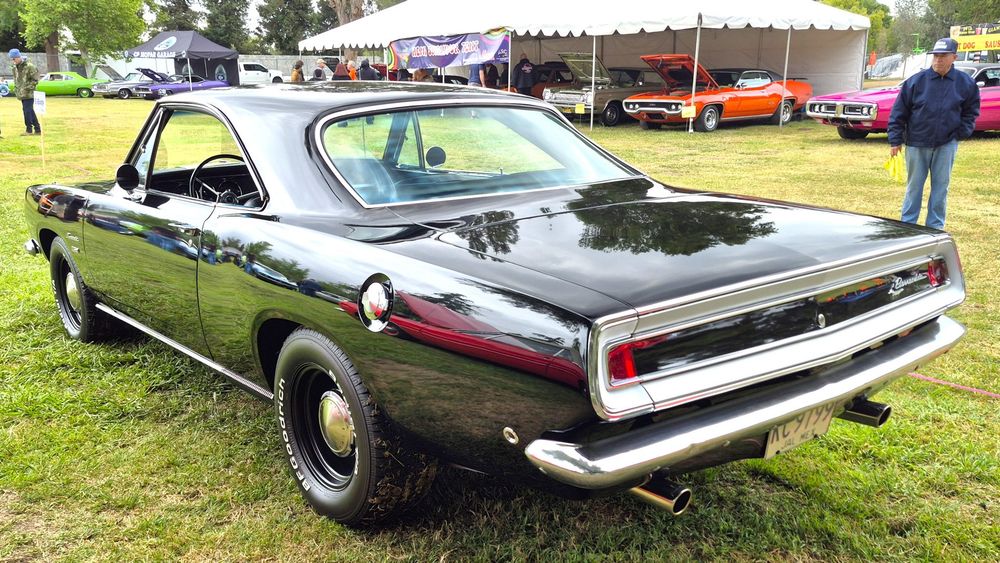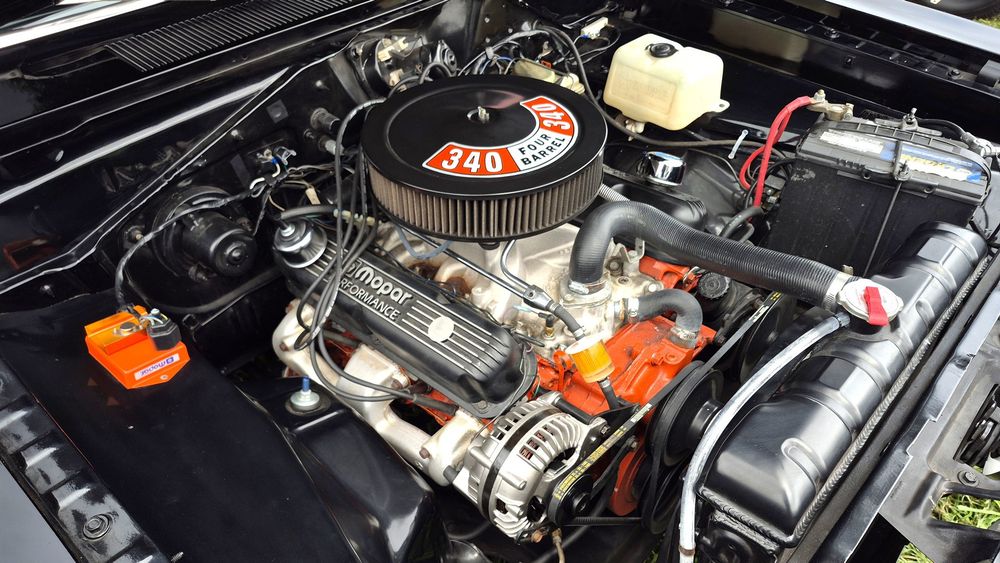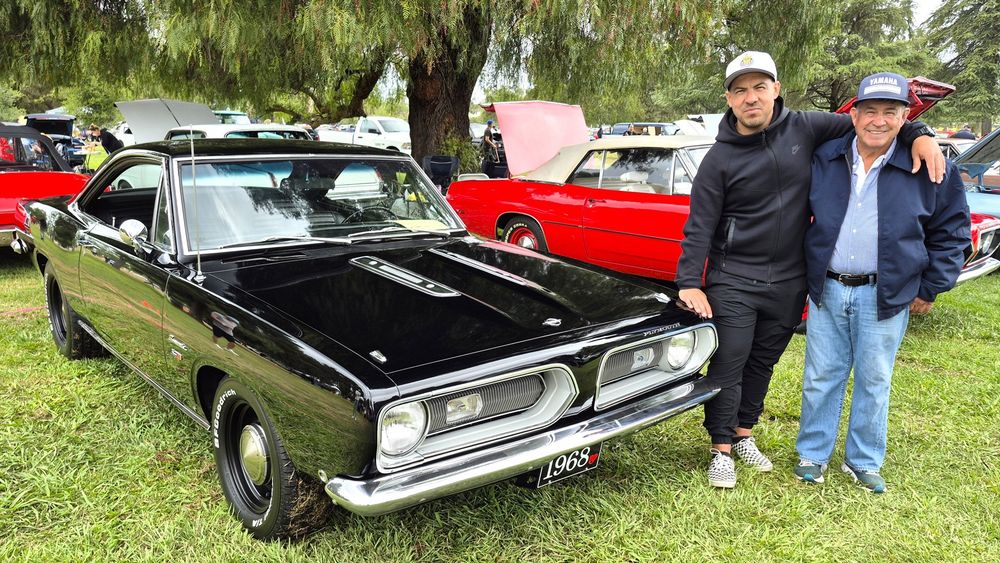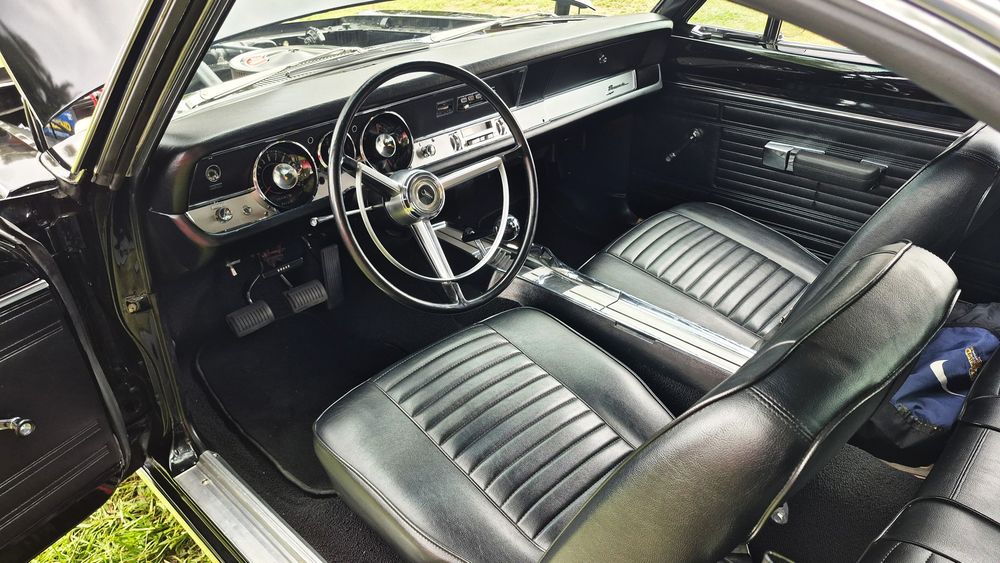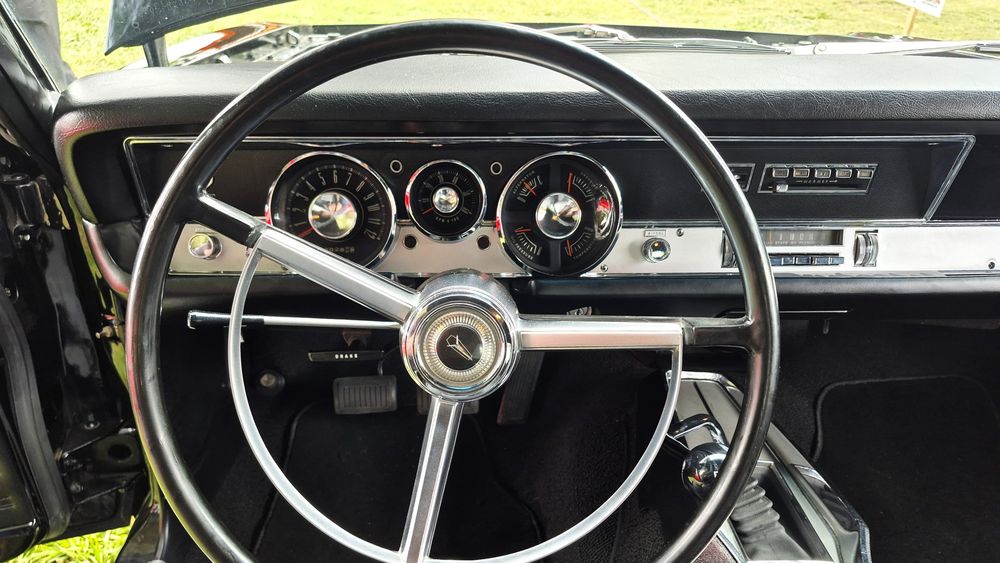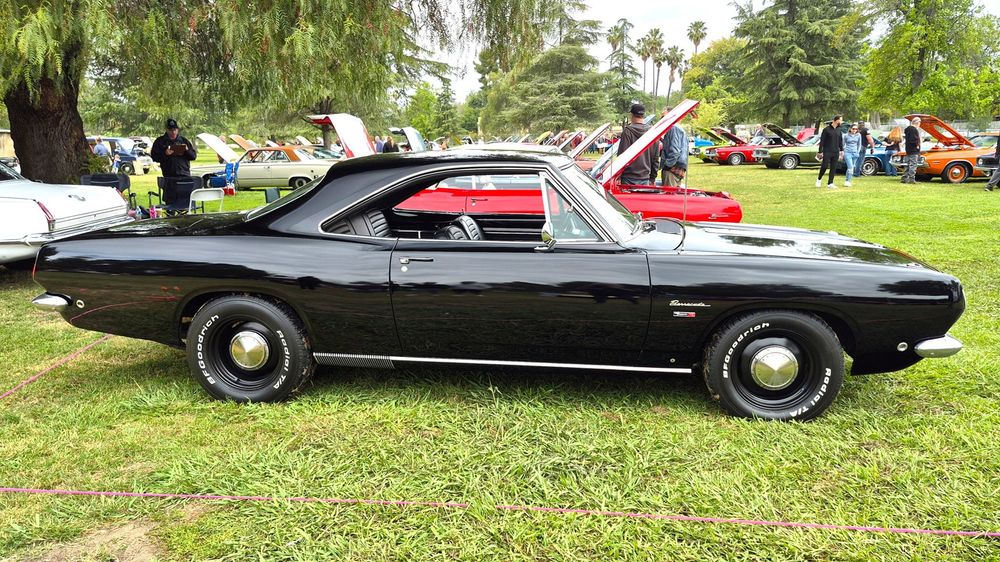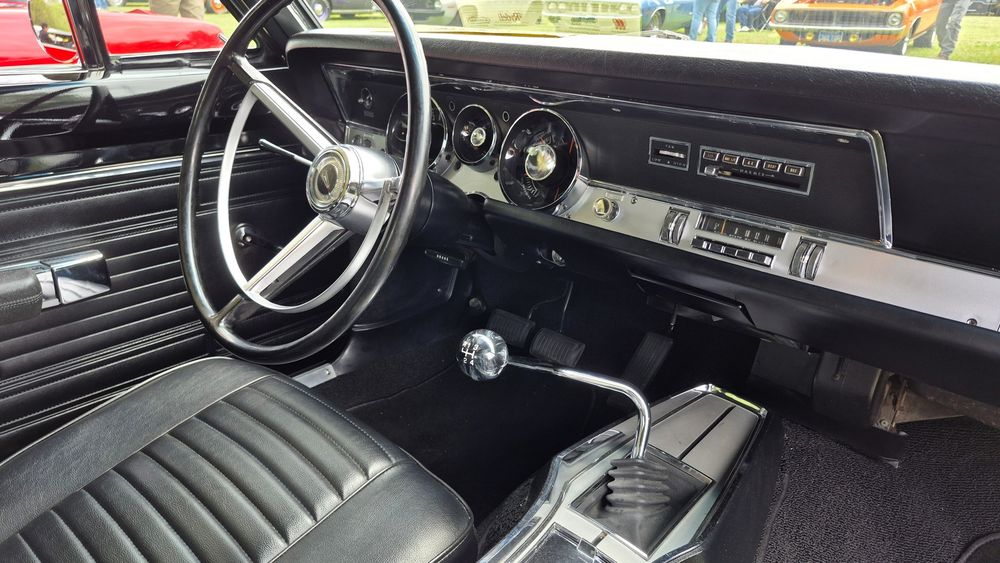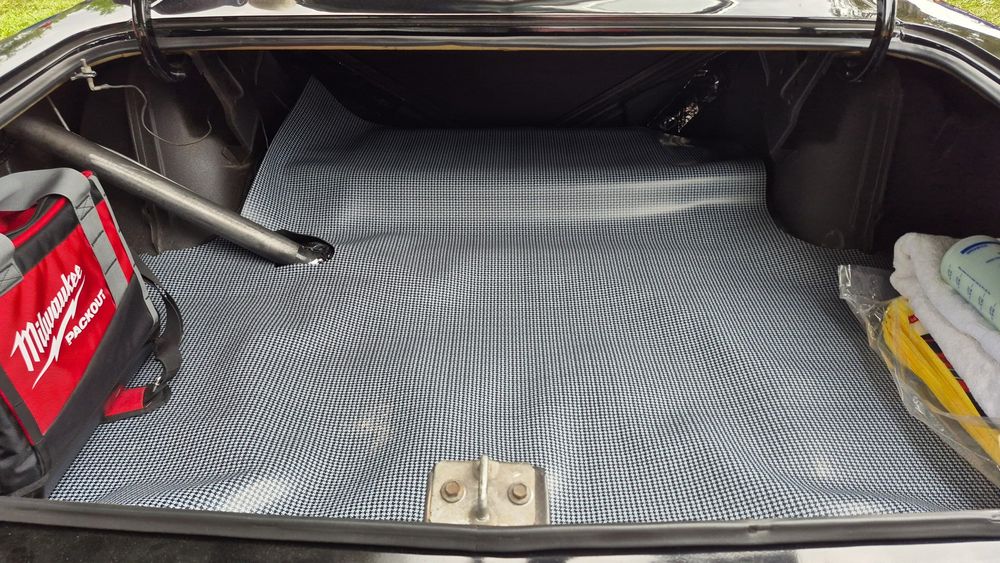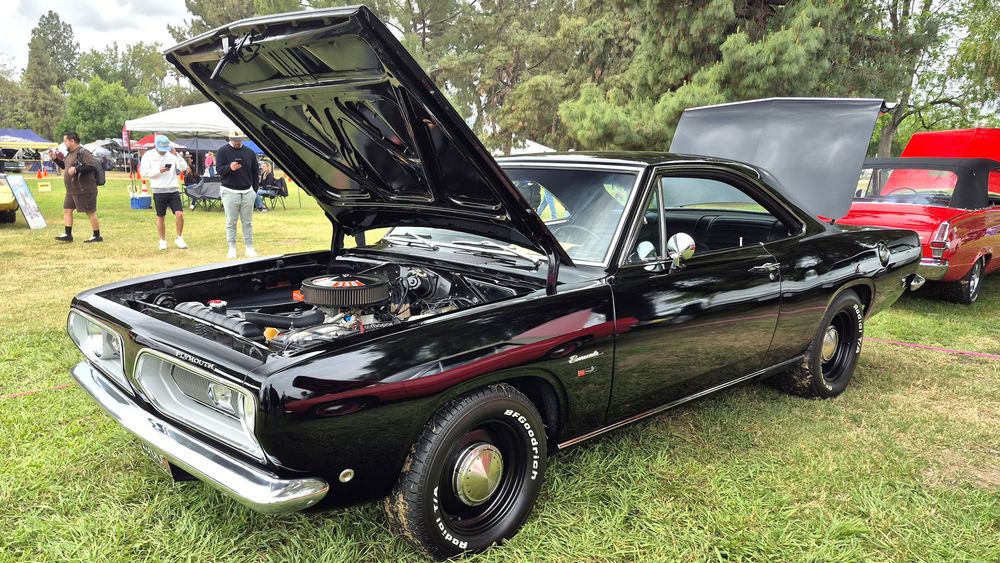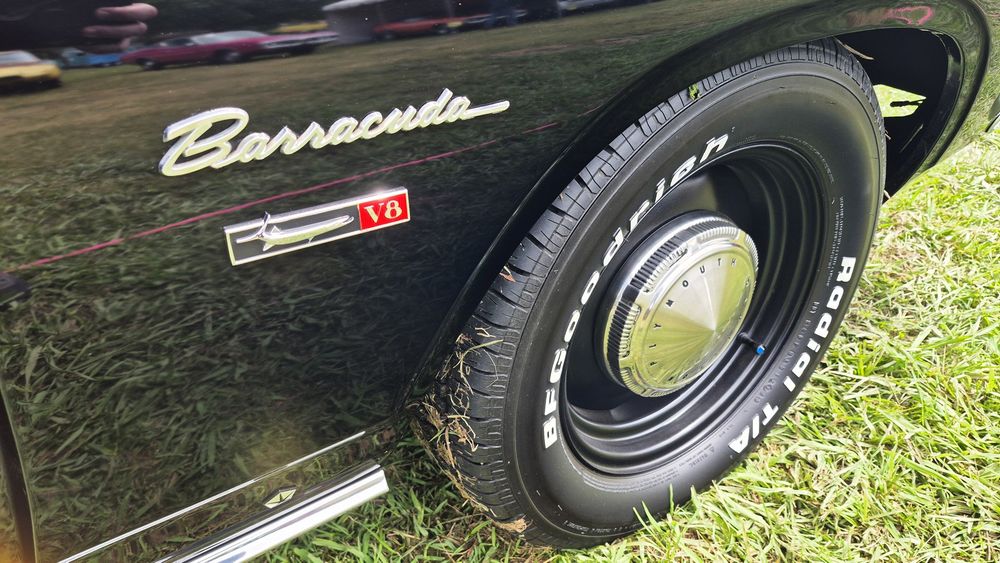Affordable Muscle Cars: 1968 Plymouth Barracuda Is Family Fun!
A father and son make lifelong memories together by spinning wrenches on an A-Body Mopar.
0:00 / 0:00
The Plymouth Barracuda was supposed to be a preemptive blow when it hit the market on April 1, 1964—two weeks ahead of Ford’s new Mustang pony car. Compact, inexpensive, sleek, V-8 powered, and targeting the exact same market segment, the Mopar A-Body landed not with applause but with the silence of one hand clapping. We can’t take anything away from Ford’s achievement, and you can argue Ford’s success eventually led to tremendous growth across the entire domestic performance car segment, but Chrysler still sold millions of A-Bodies. Nevertheless, the die had been cast that the A-Body—including Plymouth’s Barracuda—was more appliance than hot rod.
AI Quick Summary
Saul Gonzalez and his father restored a 1968 Plymouth Barracuda, fulfilling a lifelong dream in the process. They focused on practical, affordable upgrades, creating a sleek black car with family ties. The project was more about bonding than the car itself, marking it as a new family heirloom.
This summary was generated by AI using content from this MotorTrend article
Read Next
Yet there’s the inconvenient fact that even today the 1964–1969 Plymouth Barracuda is still compact, inexpensive, sleek, V-8 powered, and overlooked. For anyone who loves Mopars and wants to own and drive an amazing piece of history, there are few better choices than the Plymouth Barracuda, and if we’re being nitpicky, it would be a 1968 340-powered four-speed coupe, in black please. Great minds often think alike, and it was our good fortune to meet Saul Gonzalez, a 41-year-old behavioral therapist from Carson, California, while attending the Chrysler Performance West Spring Fling Mopar car show earlier this year.
Gonzalez had recently completed the build of his 1968 Plymouth Barracuda, a car he had always longed for, but the stars had never lined up. “I bought it in September of 2020,” Gonzalez says. “I’d been looking for one for quite a while now. I found it on Facebook Marketplace for $5,500, and it was decently priced, so I went out there and bought it the next day. It was pretty run down and needed a lot of work. The body was straight, so that was encouraging, and I just got to work on it.”
As we circled the car, we were amazed at the mirrorlike black paint, the fresh interior, and pristine engine bay. This one caught our attention fast, and it did so at least as much for what it wasn’t as for what it was. Approachable. Real world. Aspirational. The mostly stock 340 small-block machine had the purposeful look of an actively driven vehicle whose modifications were limited to a few practical and affordable upgrades and a whole lot of home-grown elbow grease. If you were looking for a car with an outrageous powertrain or a rare oddball with a million-dollar valuation, this is thankfully not it. It is, however, a new family heirloom, and with good reason: Saul was able to fulfill a lifelong dream to build a car with his dad, Jose Gonzalez. “I have to thank my dad repeatedly because I get emotional,” Saul says, holding back tears of joy. “He’s a great dad, and this is something I’ve always wanted, and it’s going to stay in the family. I have a son, Diego.”
With that simple goal in place, Gonzalez set out to find an inexpensive donor car that had at a bare minimum straight sheetmetal, and thanks to California’s mild climate, that was fairly easy. It was everything else that would need fixing. “There was an engine in it, but it was completely fractured,” Saul says. “It was already a 340, and we had to scrap it. It had a couple of fractures in places that couldn’t be repaired.”
Here’s the part where we normally inject a laundry list of mechanical wishes, big plans, false starts, and tribulations. None of that happened for Saul and his dad, or at least nothing important enough to flag as problematic. This was a mostly a straight restoration, with a few minor detours. “My dad and I did the engine and transmission,” Saul says, almost dismissive about it. “It was an automatic, so we switched it to a stick. Once we rebuilt the engine, we made it a four-speed 883. I had somebody do the body and paint.” More on that later.
The heart of this project was not in any fancy powertrain or some other engineering feat of Frankensteinian proportions, but the grunt work put in by its two principals. “We just got to work on installing the Legendary Auto Interior,” Saul says. “We did the whole thing, and we made sure we put Dynamat in there so it’s cooler than usual, not too loud or anything like that. We like to work on the details really. If you can tell, like the dash is completely redone. The gauges were redone at Redline Gauge Works in Santa Clarita.” Shannon at Redline is a big Mopar A-Body fanatic, and the work he did on the Barracuda’s instrument cluster is indistinguishable from a new factory unit, only it’s completely modernized inside.
The thing we might’ve glossed over a bit too quickly is that the Barracuda restoration—building a car—wasn’t the end goal here; it was the family bonding experience. Saul tells HOT ROD: “Thankfully, my dad’s retired, so he was always there. It was a father-and-son deal. As much as I wanted to do, he was so hands-on. He’s a lifetime mechanic, so it was cool to see him in his element. I had to give him a key to my house because when I’m at work, he didn’t want to wait until I got home!” Saul laughs. “You know, he did it for a couple weeks, and then he’s like, ‘Look, if we’re going to get this thing done, I need a key to your house because it’s not going to work, you know?’ My dad likes to work fast, so I got him a key and got him a list of things we needed.”
While the mechanical punch list was being dealt with by father and son, the vision for the final look was already embedded in Saul’s head. He wanted a heroic throwback look that had both gravitas and elegance, and it sure wasn’t going to be as originally envisioned by the factory. “The car was gold and was originally a vinyl top car,” Saul says. “It didn’t have the vinyl on it; it only had the molding that ran around the back. But I had a vision in my head of what I wanted the car to look like. Sleek-looking, black interior, a good balance, right? Like I didn’t want huge, huge tires, but I didn’t want little tires, either. I wanted to have a nice stance to it. It’s a really cool feeling knowing that what was in your mind is sitting in front of you.”
Getting the right look was largely accomplished with the wheel/tire selection, and here the solution was to move up in size to 15-inch rims (7 inches wide on the front and 8 inches wide for the rear) with 225/60R15 and 255/60R15 BFGoodrich reproduction white-letter tires, all from Coker Tire. The subtle staggered sizing gives the ’68 Barracuda a sweet stance, and with a bit of adjustment to the front suspension’s torsion bars, the nose is dipped ever so slightly for the perfect hunkered-down look.
Of course, the other half of this Barracuda’s unmistakable look is the mile-deep black paint, which absolutely makes the car. “It was actually someone who we know, one of my cousin’s really good friends,” Saul says. “His dad and my dad are from the same neck of the woods in Mexico. Tepatitlán, Jalisco. It was cool that we had that connection because when I brought him the car he was really excited. Enrique at Palace Bodyshop [in Harbor City, California]. And I think it was sort of a one-off because I had to convince the owner to let his head body and paint guy do it. They do collision stuff, and I had to kind of convince them a little bit, kind of finesse them. Enrique nudged them a little bit.”
Going to a family contact for the body and paint turned out to be the right call, not just because it turned out so well but because promises from body shops are almost always a pipe dream. So how long did it take? “I wouldn’t even say I’m finished,” Saul says, “but I would say I finished it maybe two years ago, so it took us maybe two years, which is pretty quick considering it was in the body and paint shop for eight to 10 months. The only aftermarket sheetmetal we had to do was the trunk, and we didn’t know that until we stripped the car. There was cancer in the trunk floor, so we had to replace it. Outside of that, there was a little bit of rusting on the quarters, nothing big. It was pretty straight. That’s what kind of led me to buying the car. You can find any car you want, but if you can find a good body, that’s a good base to start with.” Ten months in paint, including a trunk replacement? That’s got to be some kind of record by our reckoning!
Johnny Hunkins, born 1963, grew up mainly in Greensboro, NC. Attended Southeast Guilford High School (Greensboro) and graduated in 1981. Received a BFA degree in Art with a concentration in Design from the University of North Carolina at Greensboro (UNC-G) in 1985. The son of a music teacher and a music composer, began playing guitar at age 6, meanwhile harbored companion interests in muscle cars, model car building, NASCAR racing, and drag racing. During and after attending UNC-G, worked as an auto service writer at Montgomery Ward Auto Express. Bought a Ford Mustang LX 5.0L in 1987 which he began modifying immediately, then started contributing freelance stories to Muscle Mustangs & Fast Fords (MM&FF) in 1991. Moved to New Jersey from North Carolina and became fulltime MM&FF tech editor in the fall of 1992. Helped create, then became editor of GM High-Tech Performance (originally High-Tech Performance) magazine in 1995. While at MM&FF, invented the popular “True Street” drag racing class used by many sanctioning organizations. Moved to California in 2003 to become editor of Popular Hot Rodding magazine. In July of 2014, became editor of Mopar Muscle magazine for the rebranded TEN network. Previous and current magazine projects cars: 1987 Ford Mustang LX 5.0 (Project Excalibur), 1989 Ford Mustang LX 5.0, 1987 Buick Regal Turbo-T (2 of them), 1993 Pontiac Firebird Formula (Project Thunderchicken), 1989 Pontiac Firebird Formula 350 (Project Magnum TPI), 1994 Chevy Camaro Z 28 (The Grape Of Wrath), 1976 Chevy Camaro (Project g/28), 1968 Chevy Chevelle (Street Sweeper), 1975 Chevy Laguna S-3 NASCAR clone, 1968 Chevy Nova, and 1968 Plymouth Valiant. Other interests include fine cigars, writing and recording rock music (Hunkins is an artist on the indy label Grooveyard Records), and mid-century modern architecture and design. Hunkins lives in Desert Hot Springs, CA.
Read More
